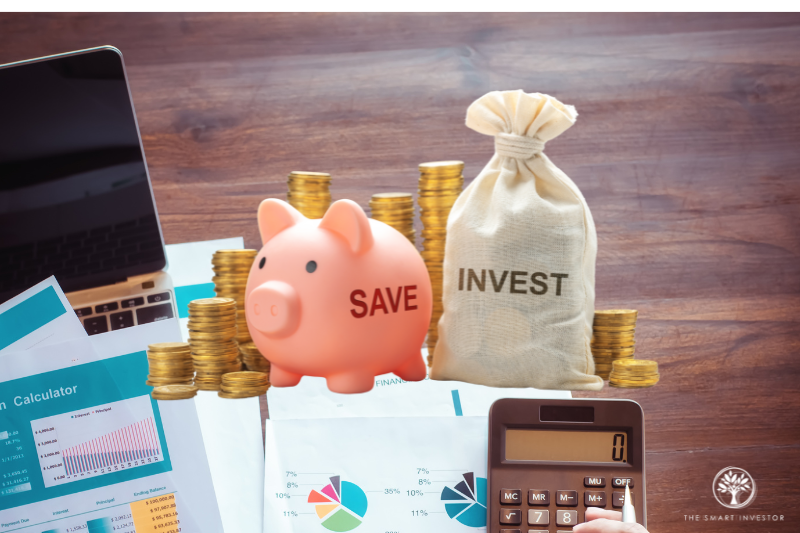35 with No Savings: How to Retire a Stock Market Millionaire

Singapore has always been labelled as an expensive country, with the city being ranked as the most expensive one for the ninth time in 11 years.
Hence, it is no surprise that many people’s salaries go towards servicing debts, purchasing necessities, or spending on wants.
And with costs going up because of rampant inflation, more and more people may end up with little left to save after paying their bills.
Major life events such as getting married, buying a house, or having a child may also drain your finances, leaving you with less than you had.
If you are in your 30s, there is also the need to care for ageing parents, hence this generation is also known as the “sandwiched” one.
Precious little savings
Many people in their 30s are faced with mounting bills and have multiple financial commitments, causing them to end up with little to no savings.
If you are close to 35 and have seen your savings depleted, it’s time to take action.
It is possible to turn the situation around if you adopt a disciplined and determined mindset.
You need to couple this with patience and a willingness to accept risks.
Are you ready to learn how you can transition from having little savings to becoming a stock market millionaire?
Then read on.
Saving and investing
The first step is to take a hard look at your income and expenses to see how you can increase your savings rate.
The idea is to slowly rebuild your savings and then deploy it into the stock market for growth and better returns.
Try to cut out unnecessary spending and focus on cheaper options such as public transport rather than ride-hailing, for instance.
Ensure that you can sock away at least several hundred a month that you will allocate to a separate bank account to prevent yourself from spending it away.
If we assume that you can save at least S$500 a month, that’s a cool S$6,000 a year in savings.
As you receive bonuses and/or increments for your work, you can, hopefully, increase the amount that you save gradually.
Once you have a nice pot of money sitting in your account and have set aside at least six months of expenses for emergencies, it’s time to think about investing some of this money.
You should start by investing your money in reliable, blue-chip stocks that give you peace of mind.
Ideally, these stocks should also pay out dividends that can provide you with a stream of additional income to supplement your earned income.
Some examples include stalwarts such as DBS Group (SGX: D05) and Singapore Exchange (SGX: S68).
You can also consider solid, well-known names such as Singtel (SGX: Z74) and Keppel Ltd (SGX: BN4).
You can also consider the REIT sector as REITs are mandated to pay out a consistent stream of dividends.
Examples of REITs with solid sponsors and great track records include Mapletree Industrial Trust (SGX: ME8U), CapitaLand Integrated Commercial Trust (SGX: C38U), and Parkway Life REIT (SGX: C2PU).
Receiving dividends and reinvesting them
The next step is to slowly purchase shares in these blue-chip stocks and REITs and then sit back and receive dividends.
Over time, as you allocate more money to these stocks, your investment portfolio should also grow in size.
As the business does well, the share price should steadily rise, giving you attractive capital gains.
The dividends you receive will also increase as the business performs well and pays out more.
Coupled with more shares of the stock, you can then enjoy a higher payout the next time dividends are declared.
Armed with these dividends, you can choose to reinvest them in the same stocks that paid them out.
The magic of compounding
This process of receiving dividends and then reinvesting them is called “compounding”.
Compounding, if practised over the years, can truly be magical as it multiplies your wealth and provides you with an ever-increasing stream of dividends.
As you invest more of your savings into stocks and receive more dividends, it becomes a virtuous cycle to rinse and repeat this process.
With more dividends, you end up buying more stocks and can receive more dividends, thus kick-starting the compounding cycle that can lift your portfolio to greater heights.
If you keep up this process for years and decades, you can end up with a million-dollar portfolio that you can comfortably retire on.
Get Smart: Time, effort and patience
As the saying goes – Rome wasn’t built in a day.
The process above may sound tedious, but with effort and patience, it’s entirely achievable.
It does, however, take time for compounding to work its magic and for your portfolio to grow.
But if done right, you can be assured that you can retire a millionaire with a solid stream of passive income.
The best gift a responsible parent can give their child is a secure, comfortable financial future. And we found that dividend investing is one of the easiest and effortless methods to do it. Our latest FREE report reveals how you can do it, plus the 3 SGX stocks you can buy today to start future-proofing your child’s financial future. Click HERE to grab a copy of the guide.
Disclosure: Royston Yang owns shares of DBS Group, Mapletree Industrial Trust and Singapore Exchange Limited.
The post 35 with No Savings: How to Retire a Stock Market Millionaire appeared first on The Smart Investor.